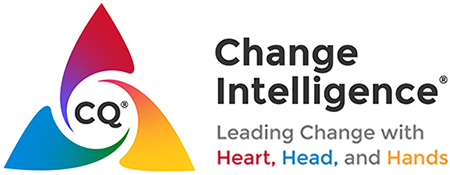Although change is a universal challenge that we face as leaders, do styles of leading change show up differently across cultures? What have we learned about leading change around the world – and what does it mean for you?
When I started researching Change Leadership Styles from around the world as part of developing the Change Intelligence/CQ Assessment, I was curious to see what differences would emerge. After consulting on global transformations and coaching leaders from around the world for decades, I had expected to find significant differences in styles of leading change across the globe. What did I find when analyzing the CQ Assessment results and responses from Change Leaders spanning North America, South/Central America, Europe, India, Asia, Australia/New Zealand, the Middle East, and Africa?
NO significant differences!
Change Leaders from around the world – whether they are in New York or New Delhi or Newcastle – are equally likely to collaborate (lead change by focusing on the “Heart”) or strategize (focusing on the “Head”) or plan (the “Hands”) as their dominant tendency in a change process.
How can this be, especially with boots-on-the-ground insight into what appears to be substantial regional, cultural, and ethnic differences?
My hypothesis – which needs to be tested empirically – is that while the prevalence of each Change Leader Style may be similar around the world, how they are enacted will vary based on cultural context. That is, while Change Leaders around the world may focus to a similar degree on people, purpose, and process, what that translates into specific behaviors may vary widely based on cultural norms and accepted business practices.
For example, consider these two examples of Change Leaders and their personal insights and actions based on CQ Assessment results with varying cultural expectations:
- A Project Manager in Singapore scores as a very “high Hands” Change Leader. She realizes that she often struggles “influencing up,” resulting in less-than-ideal sponsorship of her challenging IT implementations. However, in her words, initiating “skip level” meetings and causing senior leaders to “lose face” are frowned upon in Asian contexts. Recognizing she needs to adapt her leadership style to more impactfully influence executives, she realizes she would benefit from flexing some “Head” muscle. She creates a presentation about project status focusing on the business case for devoting more resources to the initiative, and shares that with her Program Manager. This sets the Program Manager up to be able to deliver tough messages to the senior team in a straightforward and respectful manner, enabling the executives to have the data they need delivered in a culturally-appropriate way by a peer leader.
- A very “high Head” Plant Manager from a US manufacturing firm is assigned to start-up a facility in Sweden. After meeting with the mostly Swedish management team he will be working with for several years, he realizes that the traditional top-down approach he had been used in the American-based plants he had led would not work in the Swedish business culture, which has a strong history of workplace democracy and employee empowerment. Therefore, he adopts a more “Heart plus Hands” facilitative style, creating teams to make critical decisions about the technical and social system plant design. When he transfers back the US after a highly successful commissioning process to assume a Regional Vice President of Operations role, he introduces team-based engagement processes, in a way that synced with the performance-based culture and compensation system within that business unit.
How does this apply to your change initiatives within your team and organization? What are the implications for any leader charged with the opportunity to spearhead new directions globally? Change Intelligence is the awareness of one’s Change Leader Style, and the ability to adapt one’s style to be optimally effective leading change across a variety of people and situations. Adding awareness of regional, ethnic and cultural variations – in addition to organizational, functional, and personality differences – enables leaders to be even more savvy in flexing their behaviors to engage for change with greater confidence and competence, and less stress and frustration.
Questions to ask yourself might include:
- As you develop your CQ and better understand your style, what cultural, regional or ethnic variations do you need to consider as you put together your strategic change plan?
- How do the strengths of your style mesh well in your current cultural context? How could you deploy these in new and even more winning ways?
- In what ways might you be driving change in a way that’s causing you personally – your behaviors – to be a barrier in the change process? What shifts might you benefit from making in your leadership style to enable you to powerfully partner with others who may hold different norms and expectations of how the change process should be managed?
